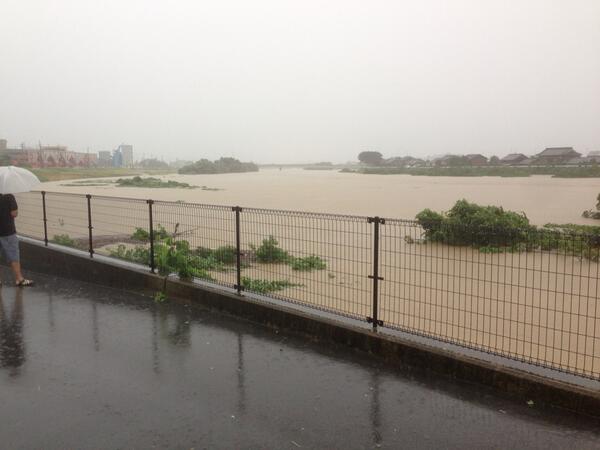(UPDATE 9/22/2013) The person at least admits both exhaust stacks are still standing despite her belief, but still insists the situation is "equivalent to having been collapsed". It's beyond comprehension at this point.
========================
From:
"Part of the support structure of the exhaust stack for Reactors 1 and 2 was found to have been damaged" (TEPCO's announcement (in Japanese only) on September 18, 2013).
The radiation measurement near the bottom of the stack was over 10 Sieverts/hour when it was measured in August 2011 (here and here, for more info).
Japanese media quoted TEPCO as saying "There is no danger of the exhaust stack collapsing."
(From TEPCO's photos and videos library, 9/18/2013)
to:
"Exhaust stack for Reactor 3 at Fukushima I Nuke Plant broke off and collapsed this morning, killing workers. Extremely high radiation of 10 Sieverts/hour is spreading rapidly, and no one can go near it. TEPCO has abandoned the plant. Radiation is spreading from the plant."
and:
"The Ministry of Foreign Affairs has issued a secret order only to Tokyo University graduates to evacuate Kanto and escape to Kyushu and Okinawa"
and:
"Aside from Tokyo University grads, only foreigners were told about it. Foreign embassies are in panic."
Ah the world is ending.
These all issued from someone who continues to insist the message she received from a Japanese living outside Japan and disseminated widely on Twitter is genuine and accurate (despite latching onto the wrong exhaust stack). After probably realizing (I hope) the exhaust stacks are still standing, she deleted her tweets, but she continues to claim it's only a matter of time before the world knows this dire truth.
She doesn't seem to know that 10 Sieverts/hour radiation was detected in 2011.
What was funny was her going back and forth with one of the workers who regularly tweet from Fukushima I Nuke Plant. She apparently did not know whom she was talking to. It went something like:
Worker ("Sunny"): That's demagogy.
Woman: No it is not, it is from reliable source!
"Sunny": If that (collapse of exhaust stack) actually happened, there would be a press conference immediately from TEPCO. The stacks are standing.
Woman: How do you know? Have you seen them in person?
Well, "Sunny" works there.
According to some who have been retweeting the "news" from this person, all major foreign media outlets are reporting it. Firm believers of this "news" say "Japanese media will never report the truth like this."
I think I can guess what will come next from the believers: "An exaggerated lie is totally acceptable to alert people on the danger of the plant."
If this kind of "news" had been released on Twitter in 2011, it might have caused a real panic.
Here's the latest screen shot from TEPCO's Fuku-I live cam:
Here's the screen shot from JNN live cam:
They are both still standing, even if "it's just a matter of time".

















 Tokyo Time
Tokyo Time
![[Most Recent Quotes from www.kitco.com]](http://www.kitconet.com/charts/metals/gold/t24_au_en_usoz_2.gif)

